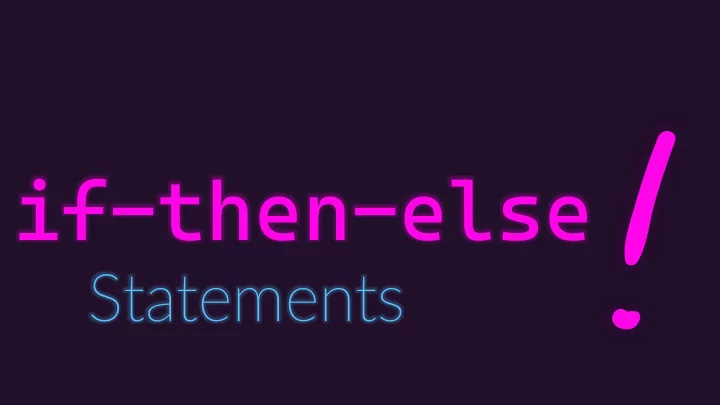

if-then-else Statements
if-then Statements • General form of an if-then statement: if [boolean expression "test"]: [then block – runs when test is True] • if-then is a control statement • It can be written anywhere you can write any other statement • It is like a conditional phrase at the beginning of a sentence (and does not end in a semi-colon) • The " test" in must be a boolean expression • Statements in the " then block " will run if the test evaluates to true . Else , the processor jumps over the then block. • All code inside the then block must be indented one level deeper than the if.
Example Setup print("Guess a number...") In VSCode: guess: int = int(input("Guess: ")) 1. Expand Explorer • Open lessons if guess == 42: • Right click lessons, new file... print("Correct") name: print("Game Over") 1. Enter the code to the right 2. Open a new Terminal, run:
if-then Statements if False test • In a flow chart ("control flow") we draw an if-then statement as a diamond. True • It will have two arrows coming out. We then label these arrows for the two cases: • True will continue to code in the then block • False will continue to code after the then block
print("Your guess is...") False if guess == 42: True print("Correct!") print("Game Over")
How do we follow a different path when the test condition is Fals lse?
if-then-else Statements • General form of an if-then-else statement: if [boolean expression - "test"]: [then block – runs when test is True] else: [else block – runs when test is False] • Works the same as an if-then statement, however, when the test expression evaluates to False the statements within the else block will run. • Once either block completes, the processor resumes at the line following the else block. Code in the else block also needs to be indented.
Example - Add an else clause Add an else clause like the one to the right. if guess == 42: print("Correct!") Try playing your game again and else: entering a correct guess as well print("Nope!") as an incorrect guess.
if-then-else Statements if False • Notice, like the if-then statement, the test then block runs only when the test condition is True True then • Unlike the if-then statement, the else block runs only when the test condition is False else • After either the then-block or else-block complete, they both continue to the same next step
Nestin ing if-then-else statements within if-then-else statements • The then and else blocks may contain one or more statements … • …but isn't if-then a statement? • Yes! • You can write further if-then statements inside of then or else blocks and the same rules apply.
Nested if-then- els lse statement Example Add the nested if-then-else if guess == 42: statement to the right inside of print("Yep!") the else block. else: if guess > 42: print("Too high!") Your game should now indicate else: if the guess was too high or too print("Too low!") low!
Recommend
More recommend